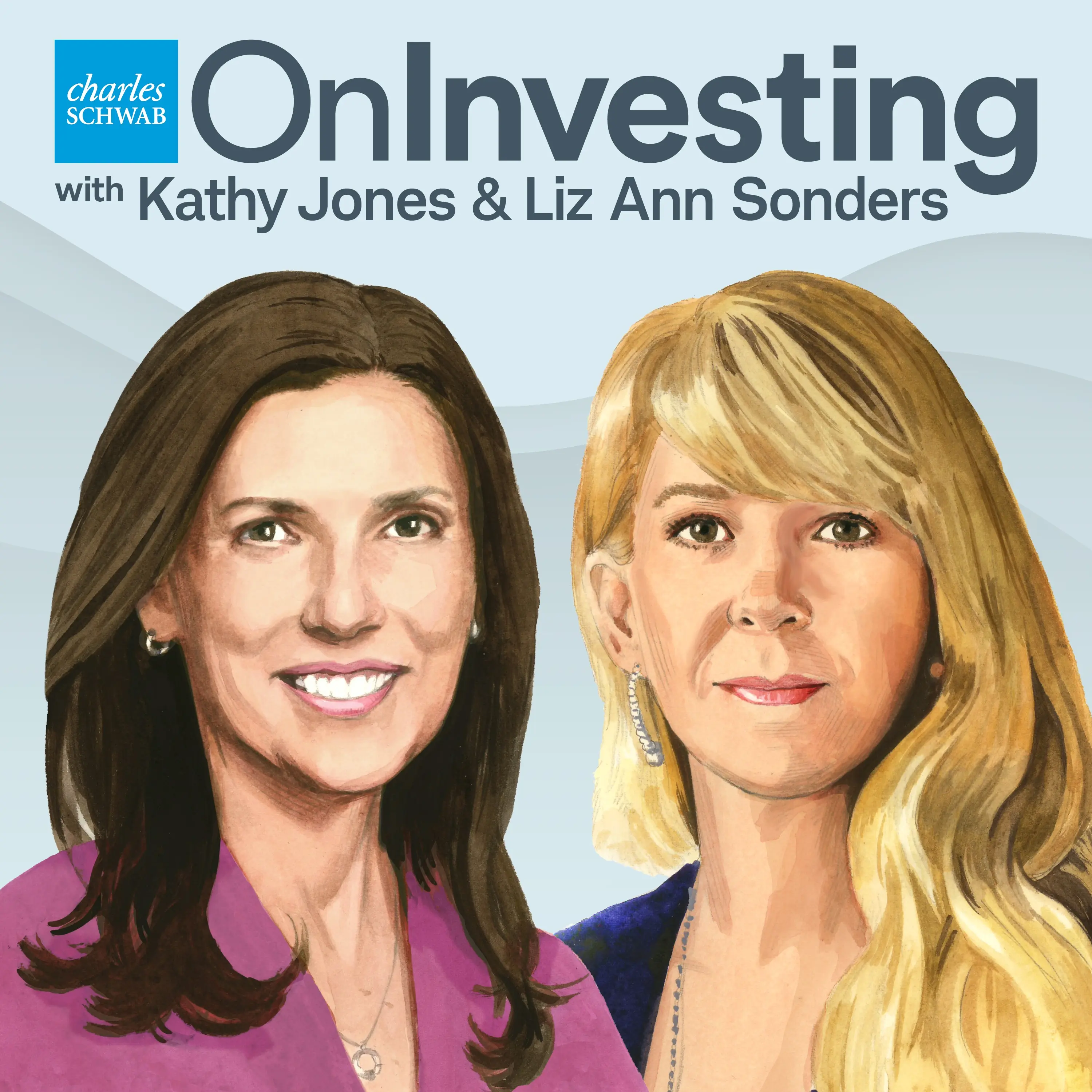'Muddiness' & Uncertainty in the Markets (With Cameron Dawson)
Kathy Jones and Liz Ann Sonders discuss recent unemployment data, the upcoming Fed meeting, and the performance of the Magnificent 7 stocks.
Then, Liz Ann Sonders and Cameron Dawson, Chief Investment Officer of NewEdge Wealth, discuss the "muddiness" in the current economic data and the overall landscape, focusing on inflation, tariffs, consumer behavior, corporate margins, and the outlook for earnings. They explore the complexities of the bond market, foreign demand for US securities, and the implications of corporate balance sheets on the economy. Their conversation also highlights the importance of international diversification and strategic portfolio construction in uncertain times.
You can read Liz Ann and Kevin's midyear report, "2025 Mid-Year Outlook: U.S. Stocks and Economy," on schwab.com.
On Investing is an original podcast from Charles Schwab.
If you enjoy the show, please leave a rating or review on Apple Podcasts.
DIY investing? Trading? Professional advice?
Investors should consider carefully information contained in the prospectus, or if available, the summary prospectus, including investment objectives, risks, charges, and expenses. You can request a prospectus by calling 800-435-4000. Please read the prospectus carefully before investing.
The information provided here is for general informational purposes only and should not be considered an individualized recommendation or personalized investment advice. The investment strategies mentioned here may not be suitable for everyone. Each investor needs to review an investment strategy for his or her own particular situation before making any investment decision.
All expressions of opinion are subject to change without notice in reaction to shifting market conditions. Data contained herein from third-party providers is obtained from what are considered reliable sources. However, its accuracy, completeness, or reliability cannot be guaranteed.
Examples provided are for illustrative purposes only and not intended to be reflective of results you can expect to achieve.
Diversification and asset allocation strategies do not ensure a profit and do not protect against losses in declining markets.
Investing involves risk, including loss of principal.
Performance may be affected by risks associated with non-diversification, including investments in specific countries or sectors. Additional risks may also include, but are not limited to, investments in foreign securities, especially emerging markets, real estate investment trusts (REITs), fixed income, municipal securities including state specific municipal securities, small capitalization securities and commodities. Each individual investor should consider these risks carefully before investing in a particular security or strategy.
Forecasts contained herein are for illustrative purposes only, may be based upon proprietary research and are developed through analysis of historical public data.
The information and content provided herein is general in nature and is for informational purposes only. It is not intended, and should not be construed, as a specific recommendation, individualized tax, legal, or investment advice. Tax laws are subject to change, either prospectively or retroactively. Where specific advice is necessary or appropriate, individuals should contact their own professional tax and investment advisors or other professionals (CPA, Financial Planner, Investment Manager) to help answer questions about specific situations or needs prior to taking any action based upon this information.
Money market funds are neither insured nor guaranteed by the Federal Deposit Insurance Corporation or any other government agency. Although the fund seeks to preserve the value of an investment at $1.00 per share, it is possible to lose money by investing in the fund.
Correlation is a statistic that measures the degree to which two securities move in relation to each other.
Schwab does not recommend the use of technical analysis as a sole means of investment research.
The book Stranger in a Strange Land is not affiliated with, sponsored by, or endorsed by Charles Schwab & Co., Inc. (CS&Co.). Schwab has not reviewed the book and makes no representations about its content.
The comments, views, and opinions expressed in the presentation are those of the speakers and do not necessarily represent the views of Charles Schwab.
All names and market data shown above are for illustrative purposes only and are not a recommendation, offer to sell, or a solicitation of an offer to buy any security.
The policy analysis provided by the Charles Schwab & Co., Inc., does not constitute and should not be interpreted as an endorsement of any political party.
Fixed income securities are subject to increased loss of principal during periods of rising interest rates. Fixed income investments are subject to various other risks including changes in credit quality, market valuations, liquidity, prepayments, early redemption, corporate events, tax ramifications, and other factors.
Lower rated securities are subject to greater credit risk, default risk, and liquidity risk.
Indexes are unmanaged, do not incur management fees, costs, and expenses and cannot be invested in directly. For more information on indexes, please see Schwab.com/IndexDefinitions.
Apple, the Apple logo, iPad, iPhone, and Apple Podcasts are trademarks of Apple Inc., registered in the U.S. and other countries. App Store is a service mark of Apple Inc.
Spotify and the Spotify logo are registered trademarks of Spotify AB.



